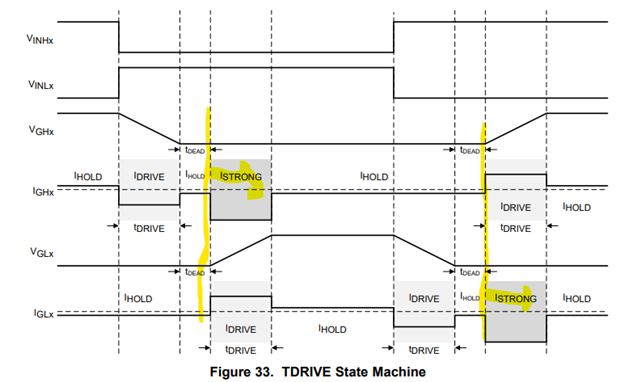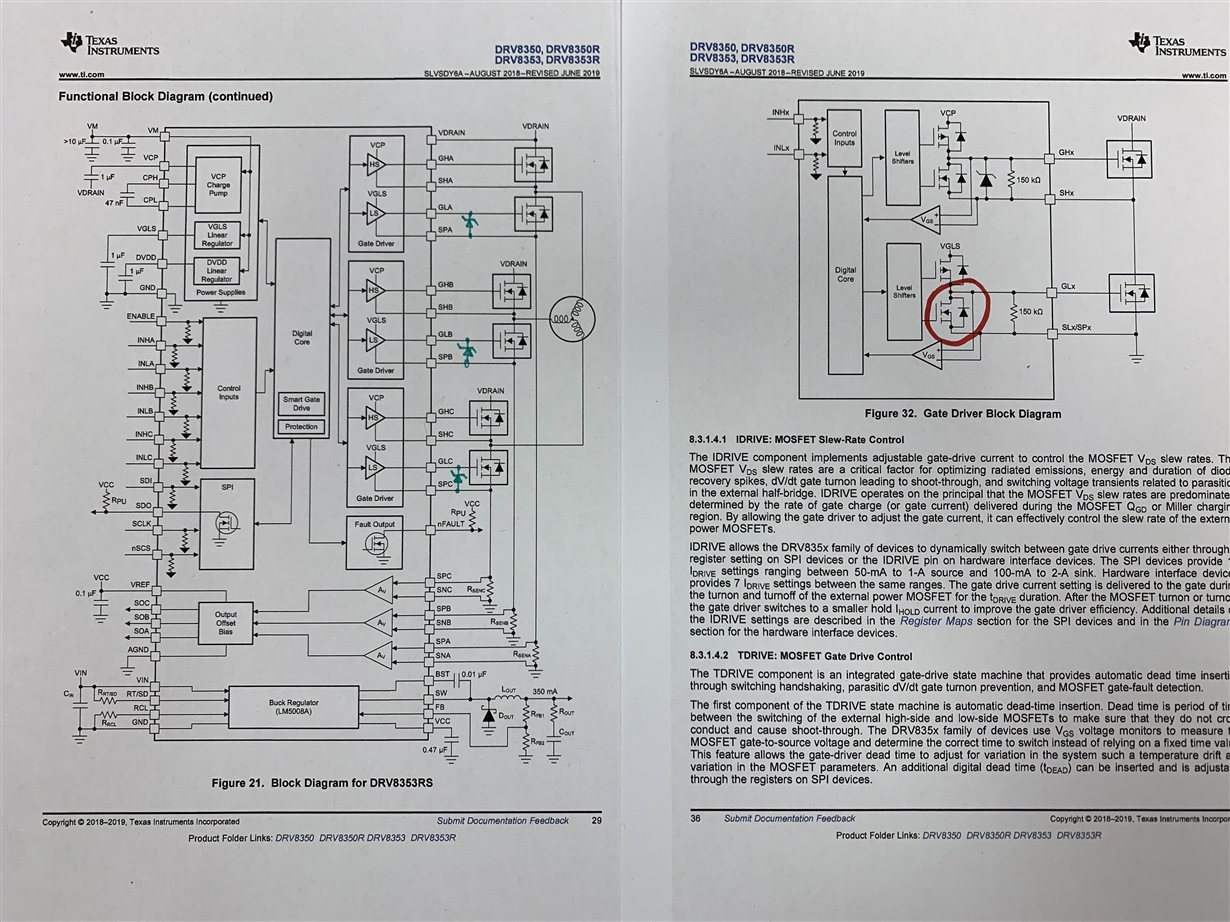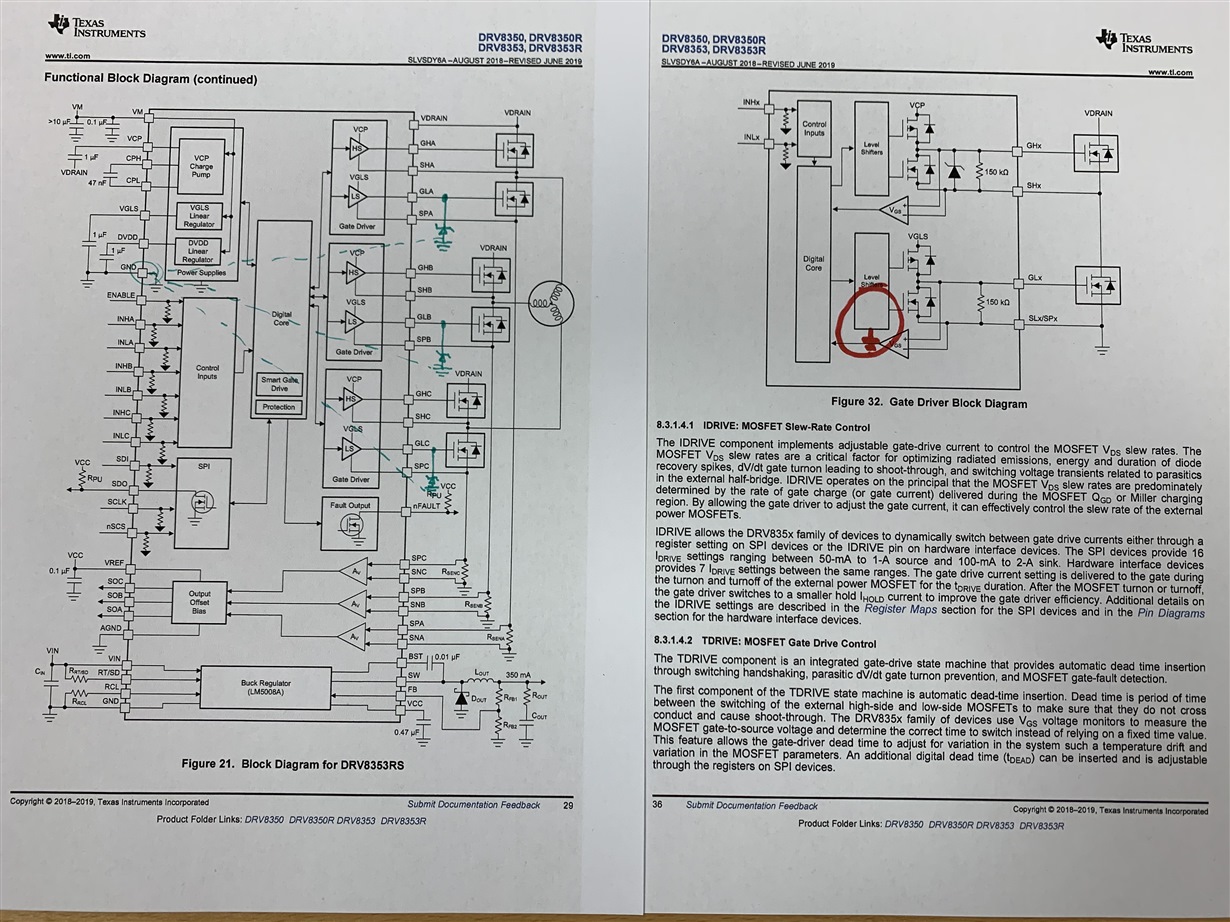Hello,
*********DRV8353RSRGZ*********
Last Year, we designed our own power electronics with the MOSFET Driver DRV8353RSRGZ. In the beginning we had a lot of Problems with destroyed DRV's, because of bad designs of our Power Stage and bad Settings of Gate Drive Current. We tried 5 Different designs of Prototypes to get a solution that works.
The design has been in use since the beginning of 2020 is verified to a phase Current of 350A and is nearly one year tested in a small series of 20 Controllers.
The Batch No. of the Parts in the small series is TI88F.
Actually we produced new Boards of the verified and tested Design, with newer DRV's (Batch No. TI98 & No. TI99).
We have the Problem that the Mosfet Driver with the higher Batch No. (TI 98 & TI99) dies at 140A Phase Current. We tested this time 8 Boards with DRV's from this Batch No. and on every Board dies the DRV quickly. At 140A phase current, the driver on the low side is destroyed at random phase.
To check whether it is a design or a component failure, we soldered DRV8353RS's from a previous order (Batch No. TI 88F) onto exactly these boards. With the "old" DRV (TI88F) no problems could be found and the function up to 350A phase current could be verified on exactly these boards.
We got the Driver (TI98F und TI99F) from different Distributors, so a delivery damage is not impossilbe.
The parts (Batch No. TI98F) are from Mouser and the Parts (Batch No TI 99F) are from TI directly.
Are there any Changes or is there any Product Change Notification we can't found, between the BatchNo. TI88F - and TI98F /TI99F?
We have a real headache to use this parts in a serial Aplication
Thank you in advance,
Jörn





